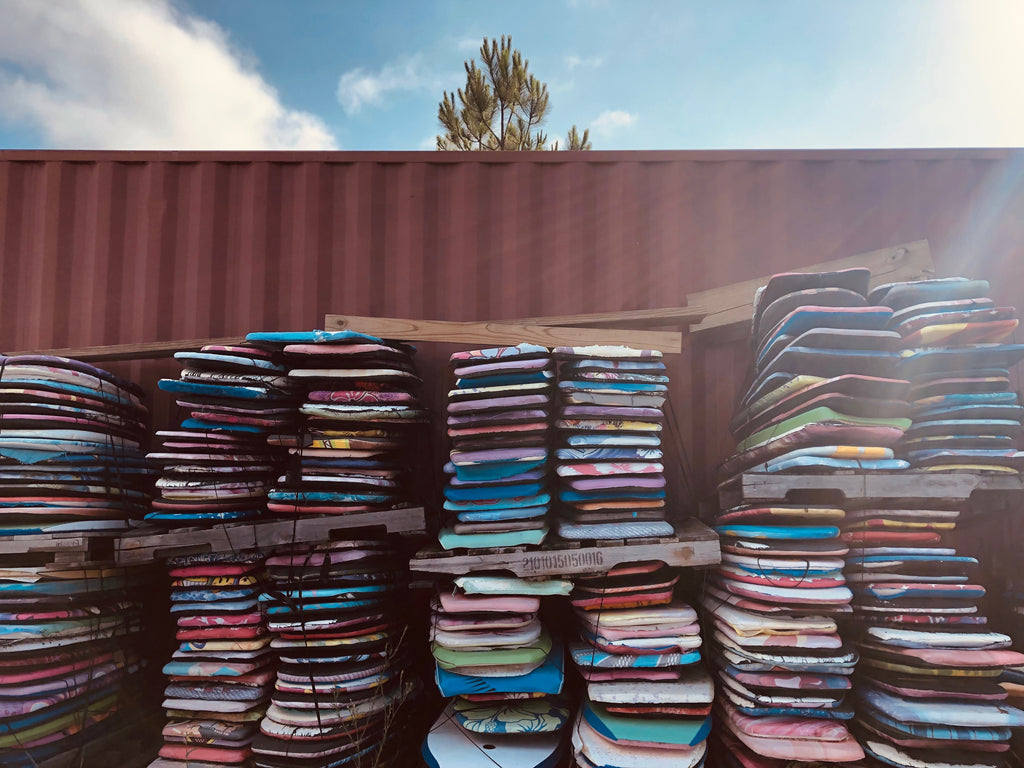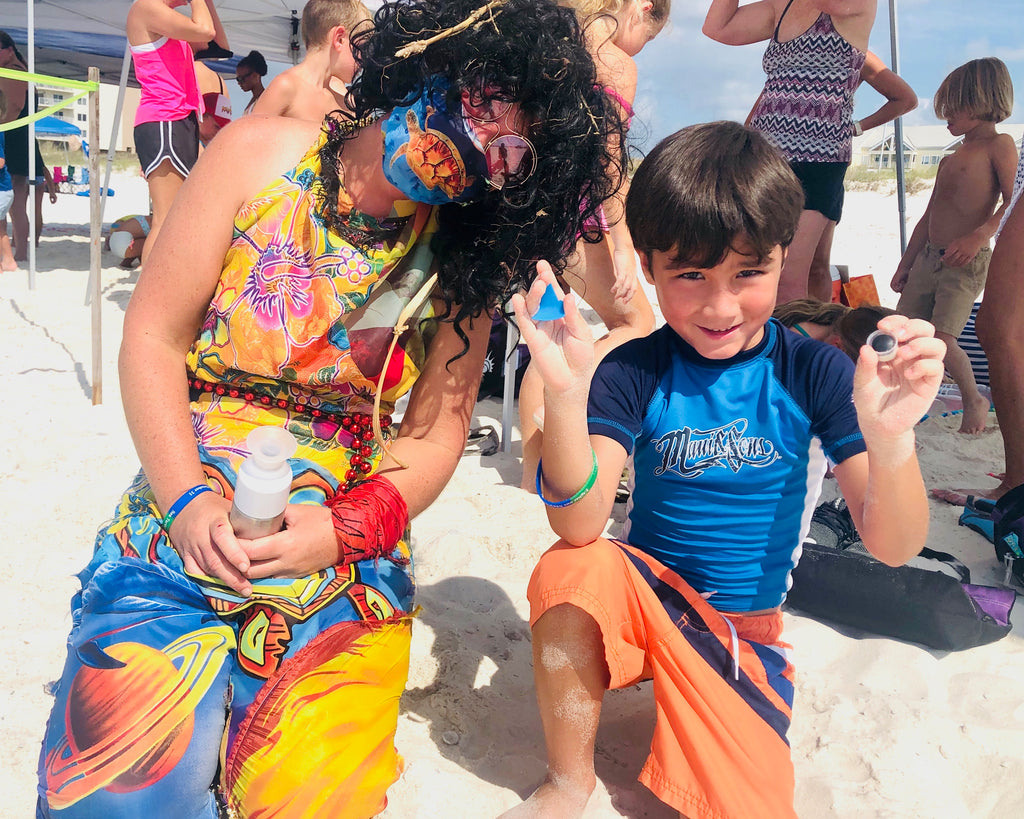On April 20th, 2010, the Deepwater Horizon oil rig exploded, kicking off an over three month effort to contain the spill while millions of barrels of oil contaminated the Gulf of Mexico. Birds, turtles, and other marine wildlife were severely harmed. The spill doused over 1,300 miles of coastline, prompting the largest oil cleanup effort in U.S. history. Thousands of workers and volunteers arrived at the Gulf Coast to lend a helping hand, and while many may have been accompanied by a lifelong passion for the ocean and conservation, others, like Marjan Verschraegen, left with a new calling.
A Dutch artist completing a master’s degree in photography at the time of the spill, Marjan was drawn back to the Gulf Coast after a prior visit, with the goal of illustrating the disaster in a different light through her art. Having grown up in the small city of Ghent, Belgium, the variety of wildlife she encountered both shocked her and evoked a deeper affection for the ocean and its coastal habitats. As a volunteer with Share the Beach, an Alabama based sea turtle conservation program, the trash she found during daily “turtle walks” inspired her photography projects. Her time volunteering ultimately led her to a career in coastal conservation as she eventually landed a job supporting and implementing the Leave Only Footprints initiative in Orange Beach, Alabama. The initiative aims to raise awareness and participation in Leave No Trace principles along the Alabama Gulf Coast, an area that attracted nearly 7 million tourists in 2019.
With over 30 miles of beaches, the Alabama Gulf Coast habitat is strained by the balance of beachgoers and marine life such as sea turtles, dolphins, and birds. Marjan and the Leave Only Footprints initiative aim to educate the millions of visitors every year about the importance of local wildlife and maintaining clean, healthy beaches. On the beach, Marjan participates in cleanups and science programs, and educates beachgoers about the thousands of turtles that rely on clean beaches to be their nesting grounds during the busiest months of the year. In an area that did not have a recycling program when she arrived in 2010, she is struck by how much litter, trash, and even perfectly functional gear is left on the beach every day. The coastal resources team recycles everything they can - metal, glass, beach chairs, boogie boards, etc. and even has recycled toy boxes at public accesses to give plastic beach toys a second and third life instead of going straight to the landfill.

Just a small portion of the boogie boards the Coastal Resources Team collects during the summer months
Having been an artist prior to coming to the Gulf Coast, Marjan saw her work on the beach as an opportunity to combine her passion for art and conservation in a novel way to help educate beachgoers. The idea came to her during a cleanup when her colleague found a barnacle covered wig washed up on the beach. A spontaneous thought occurred to her, “I need to create a person with this wig.”4 This was the birth of her alter-ego, Jane Trash. Marjan took the idea, and the hundreds of scraps she finds on the beach, from the fabric on boogie boards to random washed up items, and created ocean trash garments. In her ocean upcycled attire, Jane Trash takes to the beach, using her colorful outfits and knowledge of the local ecosystem to inspire kids and parents to clean up and protect their beaches. She explains how children and beachgoers find the character especially compelling, “... when I go and clean up the beach and children see it, they start picking up too. Leading by example is definitely a really good way to go.”
Additionally, as she collects and recycles more and more items, she selects specific pieces to be part of her OceanTrash Bible, a collection of photographs of the oddities she finds on the beach. Her goal is to connect people to the environment in a unique way, while supporting coastal conservation by donating half of her earnings made from her art to coastal cleanup efforts.

Jane Trash at work with young beachgoers (Above); one of a growing number of Oceantrash Bible pieces, collected and photographed by Marjan (Below)

Being the multi-faceted and creative individual she is, Marjan is also a member of Exxpedition, an all-female group that investigates the impact of plastic pollution in the oceans through research-focused sailing voyages. Though the sailing has been put on hold due to COVID-19, they continue to conduct plastic pollution research and explore potential solutions. With a greater understanding of the pollution problem and its impact on the environment, the Exxpedition team seeks to inspire others to take action and find their own means of contributing to fixing a global problem. For Marjan and her fellow Exxpedition crewmates, the team also offers the incredible group of multidisciplinary women a space to connect and grow while working towards the common goal of a plastic free future.
When asked how she approaches what's often seen as an overwhelming issue, Marjan explains, “take little steps. You’re going to give up if it looks too overwhelming… if you do little stuff… try to find a solution to that one thing and work on that, and once you have that down, just do another thing and do one step at a time. And look after two years where you came from and where you are now - you just don’t even realize that you did all that work.” As part of Exxpedition and the Leave Only Footprints initiative, this means breaking down the issues of ocean pollution or beach littering into more achievable tasks, such as researching microplastics or implementing waste disposal and recycling policies on the beach. In her personal life, she takes the same approach towards reducing her own plastic consumption, starting with analyzing the plastic she finds in her trash. She identifies a specific plastic item and replaces it with a more environmentally responsible alternative, such as making her own beeswax plastic wrap, formulating her own toothpaste to prevent plastic tubes from going to the landfill, or simply cutting plastic water bottles out of her shopping list and using her own reusable bottle throughout the day. She stresses that everyone can take similar steps in their own daily routines to cut down on single use plastic items, and that it’s important to reflect and give oneself credit for progress made towards solving global problems.
Marjan implements this same approach towards her OceanTrash Bible and her biodegradable design and clothing line that she plans to release in the next year. She hopes her positivity towards such a widespread, challenging issue will inspire and help others reach their “shift” moment, in which they realize that something commonplace in their lives, such as plastic consumption - plastic bags, bottles etc, has negative effects towards the environment, but also has equally as approachable solutions. If you’d like to learn more about Marjan, her art, and her experience on Exxpedition, you can visit her site here. For more information specifically on the Leave Only Footprints initiative or Exxpedition, visit cleanisland.org or exxpedition.com.
Sources
- Pallardy, Richard. “Deepwater Horizon Oil Spill.” Encyclopædia Britannica, Encyclopædia Britannica, Inc., 13 Apr. 2021, www.britannica.com/event/Deepwater-Horizon-oil-spill/Cleanup-efforts.
- Rafferty, John P. “9 Of the Biggest Oil Spills in History.” Encyclopædia Britannica, Encyclopædia Britannica, Inc., www.britannica.com/list/9-of-the-biggest-oil-spills-in-history.
- “Visitor Profile: Gulf Shores, AL - Official Website.” City of Gulf Shores Alabama Small Town, Big Beach, www.gulfshoresal.gov/669/Visitor-Profile.
- Interview with Marjan Vershraegen


Hi boldmovesonly.com owner, Your posts are always well received by the community.